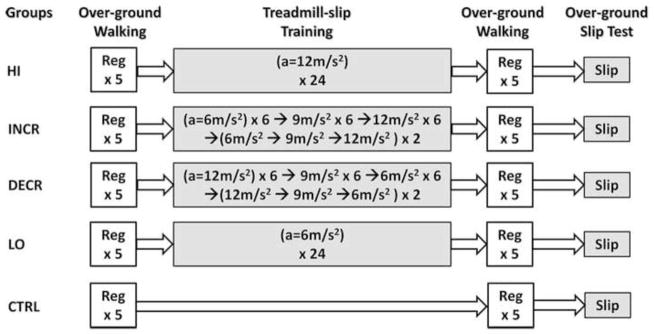Fig. 1.
Study design to compare the generalization of different treadmill-slip training paradigms to a novel overground slip. In the treadmill training groups, every subject first performed five regular walking trials as baseline trials. After that, subjects in each treadmill group experienced different training paradigms. Subjects in the HI and the LO group had 24 continuous slips with acceleration at 12 m/s2 and 6 m/s2, respectively. Subjects in the INCR and the DECR group received five blocks with a total of 24 slips. In the first three blocks, each had 6 repeated slips of the same acceleration (the block acceleration ranged from 6, 9 to 12 m/s2 for INCR and 12, 9 to 6 m/s2 for DECR). For the last two mixed blocks of three trials each, the acceleration within each block increased from 6 to 12 m/s2 (INCR) or decreased from 12 to 6 m/s2 (DECR). After the treadmill training, subjects went back to the same walkway for five trials before experiencing a novel overground slip. This slip served to test generalization of the training effects. Subjects in the CTRL group only experienced a novel overground slip after ten walking trials.

